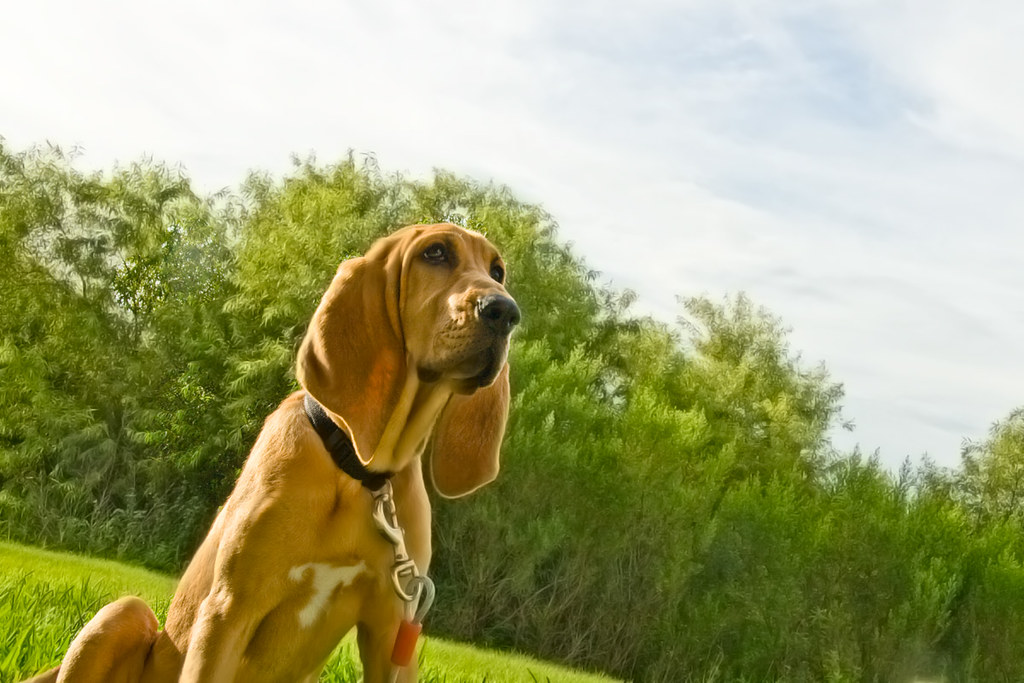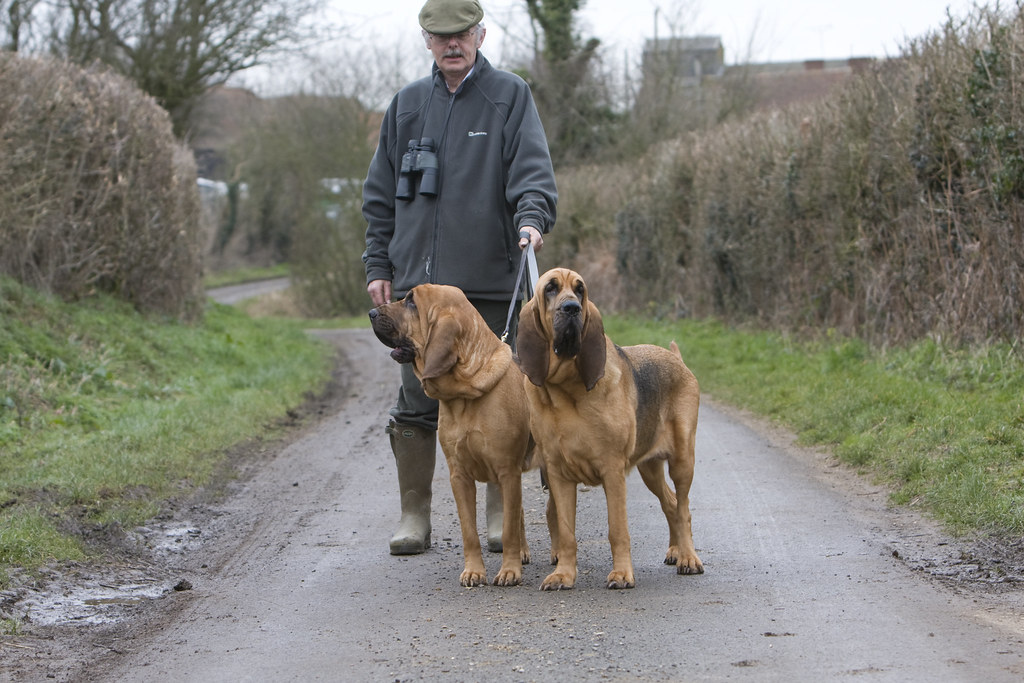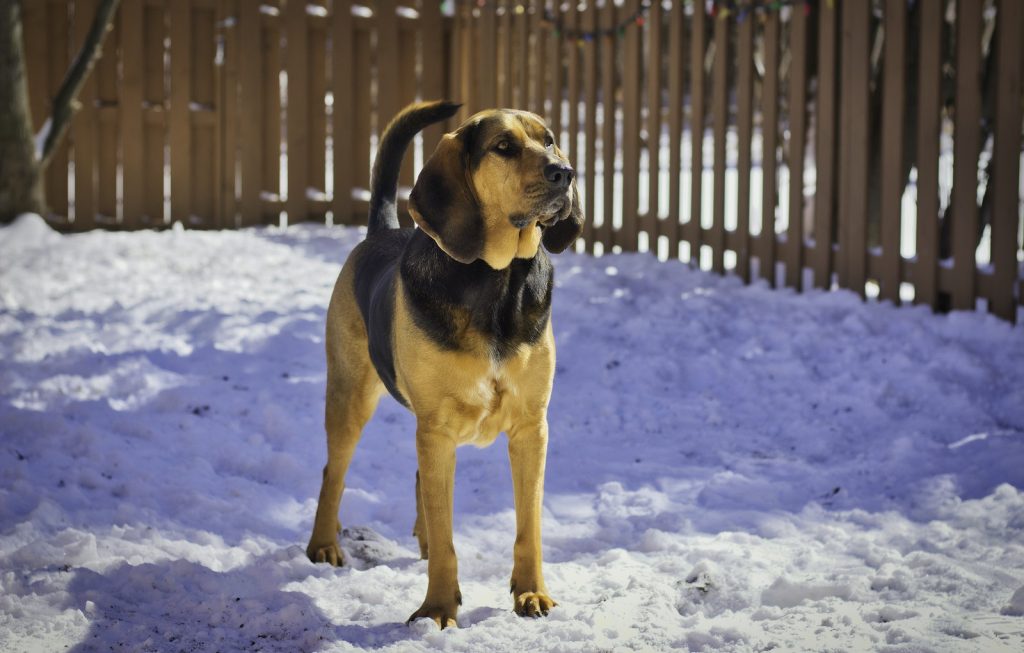Uncover the captivating world of the Bloodhound, a breed known for its exceptional tracking abilities and unwavering loyalty.
Are you seeking a devoted and steadfast companion? Look no further than the remarkable Bloodhound. Known for its extraordinary tracking abilities and unwavering loyalty, this breed has captivated dog enthusiasts for centuries. This comprehensive guide will delve into this majestic breed’s history, distinctive characteristics, grooming, training needs, health considerations, living space requirements, socialization, and more. Whether you’re considering adopting a Bloodhound or want to learn about these incredible canines, this article is your gateway to a world of knowledge.
Key Takeaways
- Bloodhounds are renowned for their exceptional sense of smell and tracking abilities.
- Their calm and gentle temperament makes them suitable for families and individuals.
- Bloodhounds require regular grooming and specific training needs due to their independent nature.
- Health considerations for Bloodhounds include potential hip and elbow dysplasia and bloat.
- These majestic dogs need ample living space and benefit from early socialization.
- Adopting a Bloodhound requires commitment and understanding of their unique needs.
Brief Overview
The Bloodhound, a breed native to Western Europe, has a rich history that dates back thousands of years. Revered for its scenting abilities, this breed has long been used in tracking, search, and rescue operations. Its remarkable sense of smell results from a unique combination of physical traits, including long ears, wrinkled skin, and a large nose.
History and Origin
The history of the Bloodhound is shrouded in intrigue and legends. Some accounts trace the breed’s roots to ancient times, while others believe it emerged during the medieval era. This breed’s predecessors were developed by monks in European monasteries, who selectively bred dogs with exceptional scenting abilities. Over time, these diligent efforts led to the development of the modern Bloodhound we know today.
Distinctive Characteristics and Temperament
Distinctive Characteristics
They possess several distinctive physical traits that contribute to their exceptional tracking abilities. These include:
- Long, Pendulous Ears: They have long, floppy ears that help collect scent particles from the air and direct them toward their keen noses.
- Wrinkled Skin: Their loose and wrinkled skin aids in scent collection and helps retain odor molecules.
- Large, Prominent Nose: They possess one of dog breeds’ largest noses, enabling them to detect even the faintest scents.
Temperament
Despite their formidable appearance, they are gentle and affectionate dogs. They are renowned for their patient and calm nature, making them suitable companions for families and individuals. While they are typically good-natured, they can sometimes exhibit an independent streak. They are known to be stubborn and may require patient and consistent training.
Grooming Needs
Proper grooming is essential to maintain the health and appearance of your pup Here are some grooming tips to keep your pup looking and feeling their best:
- Regular Brushing: They have a short, dense coat that requires regular brushing to remove loose hair and prevent matting. Use a soft-bristled brush or a grooming mitt to brush their coat gently.
- Bathing: They are generally clean dogs; bathing should only be done as needed to avoid drying out their skin. Use a mild dog shampoo and ensure thorough rinsing to remove any residue.
- Ear Cleaning: Due to their pendulous ears, This breed is prone to ear infections. Clean their ears regularly using a vet-recommended ear-cleaning solution and cotton balls. Avoid inserting anything into the ear canal.
- Nail Trimming: Trim your Bloodhound’s nails regularly to prevent them from becoming overgrown. Use a dog nail clipper and take caution not to cut into the quick, which can cause bleeding.
- Dental Care: Good dental hygiene is vital for your pup’s health. Brush their teeth regularly with a dog-friendly toothbrush and toothpaste, or provide dental chews recommended by your veterinarian.
Remember, grooming sessions are an excellent opportunity to bond with your Bloodhound and provide them with much-needed affection and attention.
Training Needs
Though intelligent, bloodhounds can be independent thinkers, training them in a unique endeavor. Here are some tips to help you successfully train your pup:
- Start Early: Begin training your pup as early as possible. Their puppy stage is crucial for instilling good behaviors and establishing a foundation for further training.
- Be Patient: They are not known for their quick obedience. They require patient and consistent training methods focusing on positive reinforcement rather than punishment.
- Use Treats and Rewards: This breed responds well to positive reinforcement, so use treats and praise to reward desired behaviors. This will motivate them to repeat the desired action.
- Stay Consistent: They thrive on routine and consistency. Use the same commands and training techniques consistently to avoid confusing your dog.
- Socialization: Expose your pup to various environments, people, and animals from a young age. This will help them develop into well-rounded and well-behaved dogs.
Professional obedience training classes can be highly beneficial, especially for novice dog owners. These classes provide a structured environment and expert guidance for training your pup effectively.
Health Considerations
While they are generally healthy dogs but prone to certain health conditions, understanding these potential issues will help you provide the necessary care and early intervention. Common health considerations for Bloodhounds include:
- Hip and Elbow Dysplasia: Bloodhounds may be predisposed to hip and elbow dysplasia, which affects the joints and can lead to pain and mobility issues. Regular veterinary check-ups, a balanced diet, and controlled exercise can help mitigate these conditions.
- Bloat: Bloodhounds are deep-chested dogs, making them susceptible to gastric dilatation-volvulus (GDV), commonly known as bloat. This is a potentially fatal condition that necessitates emergency veterinarian care. Smaller meals throughout the day and avoiding vigorous activity following meals can help lessen the likelihood of bloat.
- Ear Infections: Due to their pendulous ears, Bloodhounds are prone to ear infections. Regular cleaning and routine veterinary check-ups can help prevent and address this issue.
- Skin Issues: Bloodhounds’ loose and wrinkled skin can be prone to dermatological problems. Proper grooming, regular bathing, and keeping their skin folds clean and dry can help prevent skin infections and irritations.
- Eye Disorders: Bloodhounds may be susceptible to various eye conditions, such as ectropion (drooping lower eyelids) and entropion (inward-rolling eyelids). Regular eye examinations and prompt veterinary care are crucial for optimal eye health.
Regular veterinary check-ups, a balanced diet, and a loving and nurturing environment are essential for ensuring the overall well-being of your pup.
Living Space Consideration
This is a large and active breed requires ample living space to thrive. Here are some considerations when it comes to providing the right living environment for your Bloodhound:
- Indoor Space: While this breed enjoy spending time indoors with their families, they need enough space to move around comfortably. Ensure your home has enough room to accommodate their size.
- Secure Fencing: Bloodhounds have a strong instinct to follow scents, which can sometimes lead them astray. A safe and well-maintained fence around your yard is essential to prevent them from wandering off.
- Outdoor Area: Bloodhounds benefit from access to a secure outdoor area to roam and explore safely. This allows them to satisfy their instincts and burn off energy.
- Climate Considerations: Bloodhounds are sensitive to extreme temperatures. Provide appropriate shelter and avoid leaving them outdoors in excessively hot or cold weather.
Creating a suitable living space for your Bloodhound will ensure their comfort, safety, and overall well-being.
Socialization
Early socialization is crucial for them to develop into well-rounded and friendly dogs. Here’s how you can socialize your pup effectively:
- Expose to Various Environments: Introduce your Bloodhound to different environments, such as parks, streets, and other public spaces. Gradually expose them to new sights, sounds, and smells to help them adapt and remain calm in various situations.
- Meet Different People: Encourage your Bloodhound to interact with various individuals, including family members, friends, and strangers. This will help them become comfortable with different people and prevent potential aggression or fear.
- Interact with Other Animals: Allow controlled interactions with other animals, including dogs of various sizes and other household pets. Proper socialization will help your pupdevelop positive relationships and minimize potential aggression or dominance issues.
- Positive Reinforcement: During socialization sessions, reward your pup with treats, praise, and affection. This will associate positive experiences with new environments, people, and animals.
Early and consistent socialization is vital to ensuring your pupgrows up to be a well-adjusted and friendly companion.
Caring for Your Bloodhound
Caring for a Bloodhound involves meeting their physical, mental, and emotional needs. Here are some essential aspects of caring for your pup:
- Exercise: They have moderate exercise needs. Regular walks, play sessions, and mental stimulation activities, such as puzzle toys and scent games, are crucial to stimulate them physically and mentally.
- Nutrition: Feed your pup a balanced and nutritious diet appropriate for age, size, and activity level. Consult your veterinarian about the optimal diet plan for your dog.
- Routine Veterinary Care: Schedule regular check-ups with a veterinarian to monitor your pup’s health, administer necessary vaccinations, and address any potential issues promptly.
- Affection and Attention: Bloodhounds thrive on love and attention from their families. Give them enough affection, quality time, and mental stimulation to keep them happy and comfortable.
Adopting a Bloodhound
Adopting a Bloodhound is a commitment that requires careful consideration and preparation. Here are some factors to ponder before bringing a Bloodhound into your home:
- Lifestyle: Assess your lifestyle and determine if it can accommodate the needs of you pup. They require time, space, and attention to thrive.
- Allergies: Check for any allergies to dog dander or fur among family members or individuals in your household.
- Family and Children: They are generally get along well with children, but supervision is essential, especially when interacting with younger children. Teach youngsters to approach and engage with dogs courteously and kindly.
- Time Commitment: They require time and attention, including regular exercise, grooming, and training sessions. Ensure you can dedicate the necessary time and effort to meet their needs.
- Breed-Specific Rescues: Consider adopting from a breed-specific rescue organization or contacting reputable breeders to find a Bloodhound needing a loving home.
Adopting a Bloodhound gives you a loyal and loving companion and a second chance for a deserving dog.
Frequently Asked Questions
What does “Bloodhound” mean?
The term “Bloodhound” refers to a breed of dog known for its exceptional scenting abilities and tracking skills. The name “Bloodhound” is believed to have originated from the dogs being bred in noble “blooded” lines, indicating their high pedigree.
Is the Bloodhound a friendly dog?
Yes, they are generally friendly and gentle dogs. Their calm and patient temperament makes them suitable for families and individuals. However, like any dog, proper socialization and training are necessary to ensure their good behavior.
Why is it called a “Bloodhound”?
The name “Bloodhound” has historical origins and is associated with the breed’s noble lineage. These dogs were selectively bred by monks in European monasteries, and the term “blooded” was used to indicate their high pedigree or pure lineage.
How powerful is a Bloodhound’s sense of smell?
Bloodhound possesses an extraordinarily powerful sense of smell. They are known for their ability to track scents over long distances and can even pick up several days-old scents. Their sense of smell is estimated to be 1,000 times more powerful than that of humans.
How rare are Bloodhounds?
While not as common as some popular breeds, Bloodhounds are not considered extremely rare either. They can be found in many countries worldwide, and various breeders and rescue organizations specialize in Bloodhounds.
Are Bloodhounds good with children?
Yes, Bloodhounds are generally good with children. They have a patient and gentle nature, which makes them suitable companions for families with kids. However, supervision is essential to ensure safe interactions between the dog and the child, especially with younger children.
Conclusion
In conclusion, the Bloodhound is an extraordinary breed with a unique combination of tracking abilities, loyalty, and gentle temperament. Their rich history, distinctive characteristics, grooming and training needs, health considerations, living space requirements, and socialization requirements make them a breed that requires commitment and understanding.
The Bloodhound might be the perfect match if you’re seeking a loyal and tenacious companion who will be by your side through thick and thin. Remember to show them the love, care, and attention they deserve, and they will show you unwavering loyalty and companionship like no other.
Join Bone Voyage Dog Rescue and be the reason for wagging tails and joyful hearts! Help abandoned and neglected pets find everlasting happiness and their forever homes.
🐾 Embrace the Love: Adopt and Save a Life! Experience the fulfillment of providing a loving home to a stray dog. Our adoption program is dedicated to matching pets with the perfect families. Be the hero they’ve been waiting for!
🐶 Foster Hope: Create a Haven in a Temporary Home! Can’t commit to adoption right now? Fostering is a meaningful way to make a difference without a long-term commitment. Provide a safe and nurturing environment until they find their forever family.
🙌 Volunteer: Become a Hero in Disguise! Join our passionate team of volunteers who tirelessly improve the lives of our furry friends. Whether walking dogs or planning activities, every hour you contribute makes a tremendous impact.
Ready to take action and change lives? Get in touch with us today!
📞 Contact us at +52 3329718011 to learn more about how you can help.
📧 For adoption inquiries, email us at [email protected].
📧 To inquire about fostering options, please reach out to [email protected].
📧 Interested in volunteering? Send us an email at [email protected].
Together, let’s make tails wag and hearts sing! Make a difference now, not later!



